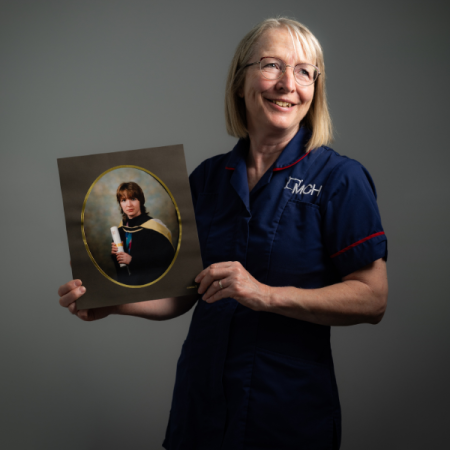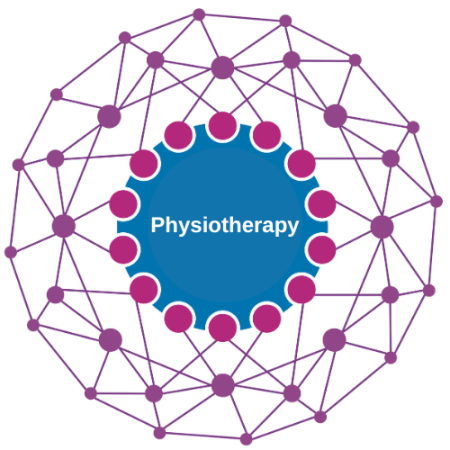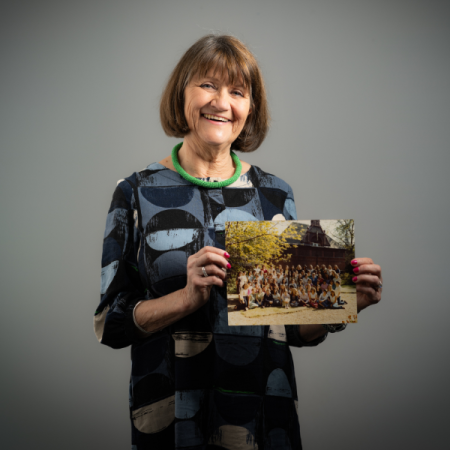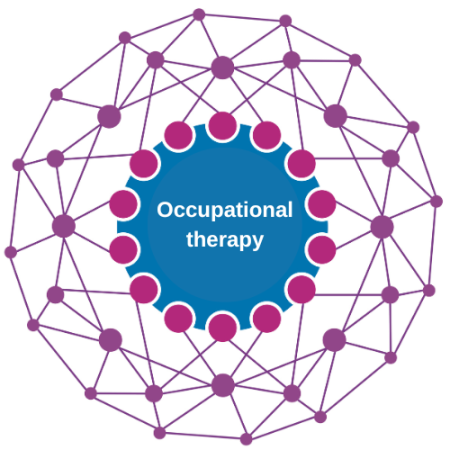Are you an Allied Health Professional (AHP) interested in returning to practice?
Health and social care organisations in Kent and Medway are working together to bring qualified AHPs back to work.
Funding may be available (up to £800 for an individual) from Health Education England return to practice programme for people qualified in any of the 14 AHP professions.
Listen to our colleagues' inspiring stories
Health and care partners in Kent and Medway are looking for:
• all qualified AHPs who live in, and plan to return to work in England
• AHP’s previously registered with the Health and Care Professions Council (HCPC), General Osteopathic Council (GOsC) or those qualified in the UK but have not registered with the HCPC in the past five years
• AHP’s registered with the HCPC or GOsC and looking for a period of clinical updating because they have not practiced in a patient-facing role for at least two years.
After an informal chat, you will be matched with potential placement organisations from within the Kent and Medway Integrated Care System to begin your return to practice journey.
For osteopaths, please visit the General Osteopathic Council website and complete the self-assessment tool attached. If you’re an osteopath and wish to return to return to practice in the NHS, please contact the AHP Faculty who can support with sourcing a return to practice placement.
This project is led by the Kent and Medway AHP Faculty, part of NHS Kent and Medway Integrated Care Board.
Online return to practice courses
- Birmingham City University: Return to practice health and care
- Coventry University: Virtual learning programme for health and care professions council returners
What we offer
Our return to practice programme, includes supervised placement practice, formal continued professional development, a competency portfolio and peer support to enable subsequent application for HCPC re-registration.
We will support you every step of the way.
If you’re ready to return to practice, or if you have any questions or would like to find out more, please email the AHP Faculty.
Find more information about return to practice for AHPs.
Inspiring stories: Return to practice case studies





The 14 allied health professions
Art therapists use art as a form of psychotherapy to encourage clients to explore a variety of issues including emotional, behavioural or mental health problems, learning or physical disabilities, life-limiting conditions, neurological conditions or physical illnesses. People of all ages from children to the elderly, regardless of artistic experience, use art therapy in this way as an aid to supporting them with their particular concern. It is not a diagnostic tool but rather a mode of communication and expression.
Dramatherapists are both clinicians and artists that draw on their knowledge of both theatre/drama and therapy to use performance arts as a medium for psychological therapy. Clients are able to explore a wide variety of different issues and needs from autism and dementia to physical/sexual abuse and mental illness in an indirect way leading to psychological, emotional and social changes. Dramatherapists can be found in many varying settings such as schools, mental health care, general health social care, prisons and in the voluntary sector.
Music therapists engage clients in live musical interaction to promote an individual’s emotional wellbeing and improve their communication skills. Clients do not need to have any previous experience of playing a musical instrument (or even singing) as this established psychological clinical intervention uses their unique connection to music and the relationship established with their therapist to help develop and facilitate communication skills, improve self-confidence and independence, enhance self-awareness and awareness of others, and improve concentration and attention skills.
In particular, music therapy is an effective intervention for those clients who cannot speak due to disability, illness or injury as their psychological, emotional, cognitive, physical, communicative and social needs can be addressed through the musical interaction with their therapist.
Music therapy can be beneficial for individuals of all ages and physical abilities however, from new born babies in terms of establishing the parent-child bond to those receiving palliative, end-of-life care.
Podiatrists provide essential assessment, evaluation and foot care for a wide range of patients with a variety of conditions both long term and acute. Many of these fall into high risk categories such as patients with diabetes, cerebral palsy, peripheral arterial disease and peripheral nerve damage where podiatric care is of vital importance.
Many podiatrists have become further specialised into either the area of biomechanics or surgery. Biomechanics is often associated with treating sports related injuries but spans across a wide range of conditions including children and the elderly.
Podiatric surgeons offer surgical interventions in all aspects of foot health management. Podiatrists work in both the community and acute settings and while many are employees of the NHS many podiatrists now provide healthcare services in the private sector.
Dietitians are the only qualified health professionals who assess, diagnose and treat diet and nutritional problems at an individual and wider public health level.
Uniquely, dietitians use the most up–to-date public health and scientific research on food, health and disease, which they translate into practical guidance to enable people to make appropriate lifestyle and food choices. Dietitians are the only nutrition professionals to be regulated by law, and are governed by an ethical code to make sure they always work to the highest standard.
Dietitians work in the NHS, private practice, industry, education, research, sport, media, public relations, publishing, government and Non-Government Organisations (NGOs). Dietitians advise and influence food and health policy across the spectrum from government, to local communities and individuals.
Occupational therapists (OTs) work in the NHS, local authority social care services, housing, schools, prisons, voluntary and independent sectors, and vocational and employment rehabilitation services as well as in education and research. Occupational therapists work with people of all ages with a wide range of problems resulting from physical, mental, social or developmental difficulties.
OTs support people with a range of interventions to enable them to return to or optimise participation in all the things that people do, for example: Caring for themselves and others, working, learning, playing and interacting with others. Being deprived of or having limited access to any or all of these occupations can affect physical and psychological health and hence OTs positively impact upon the wellbeing and rehabilitation of patients in most care pathways and in the broader public health and social care environment.
Case study
Read about Jane Miller's career as an occupational therapist within Kent County Council's social services.
Operating Department Practitioners (ODPs) are highly skilled healthcare practitioners that support patients of all ages during each phase of the patient’s perioperative care, including:
- anaesthetic – provide patient-centred care and prepare specialist equipment and drugs
- surgical – prepare all the necessary equipment and instruments for operations and providing these to the surgical team during the operation
- recovery – supporting the patient throughout their time in the recovery ward, assessing vitals and fitness for return to the ward.
As well as providing this specialised care, ODPs are responsible for preparing the operating theatre and maintaining communication between the surgical team, operating theatre and wider hospital.
ODPs typically work in operating departments however their skills are increasingly being needed in other critical care areas within a hospital.
Orthoptic clinical practice encompasses both diagnosis and treatment and is wide ranging. Orthoptists help premature infants with retinopathy of prematurity, children with reduced vision due to squint, adults and children with eye movement defects due to diabetes, hypertension, endocrine dysfunction, cancer, trauma and stroke. Extended scope orthoptic practitioners now work in high volume ophthalmic specialities such as glaucoma, cataract and age related macular degeneration.
Orthoptists work in acute hospital and community settings in health and education often as part of a multi-disciplinary medical, nursing and AHP team.
Osteopaths take a holistic view of the structure and function of the body to diagnose and treat a wide variety of medical conditions. Their work is centred on the principle that the skeleton, muscles, ligaments and connective tissues of an individual need to function smoothly together so as to maintain wellbeing.
Osteopaths use a number of non-invasive treatments such as touch, physical manipulation, stretching and massage to restore bodily equilibrium through increasing the mobility of joints, relieving muscle tension, enhancing blood and nerve supply to tissues, and encouraging an individual’s own healing mechanisms.
Orthotists and prosthetists are autonomous registered practitioners who provide gait analysis and engineering solutions to patients with problems of the neuro, muscular and skeletal systems. They are extensively trained at undergraduate level in mechanics, bio-mechanics, and material science along with anatomy, physiology and pathophysiology. Their qualifications make them competent to design and provide orthoses that modify the structural or functional characteristics of the patients’ neuro-muscular and skeletal systems enabling patients to mobilise, eliminate gait deviations, reduce falls, reduce pain, prevent and facilitate the healing of ulcers.
They treat patients with a wide range of conditions including diabetes, arthritis, cerebral palsy, stroke, spina bifida, scoliosis, musculoskeletal, physiotherapy, sports injuries and trauma. Whilst they often work as autonomous practitioners they increasingly often form part of multidisciplinary teams such as within the diabetic foot team or neuro-rehabilitation team.
Paramedics are the senior ambulance service healthcare professionals at an accident or a medical emergency. Often working by themselves, paramedics are responsible for assessing the patient’s condition and then giving essential treatment. They use high-tech equipment such as defibrillators, spinal and traction splints and intravenous drips, as well as administering oxygen and drugs.
Physiotherapy uses physical approaches to promote, maintain and restore physical, psychological and social well-being, working through partnership and negotiation with individuals to optimise their functional ability and potential.
Physiotherapists address problems of impairment, activity and participation and manage recovering, stable and deteriorating conditions – particularly those associated with the neuro-muscular, musculo-skeletal, cardio-vascular and respiratory systems – through advice, treatment, rehabilitation, health promotion and supporting behavioural change.
Physiotherapy uses manual therapy, therapeutic exercise, the application of electro-physical modalities and other physical approaches in response to individual need. Physiotherapists work across sectors and settings, including acute, community and workplace settings, and with a large number of population and patient groups including children, the working population, and older people.
Speech and language therapists (SLTs) in the UK work with children and adults to help them overcome or adapt to a vast array of disorders of speech, language, communication and swallowing.
These include helping young children to access education, working with young offenders to enable them to access the programmes designed to reduce reoffending, reducing life-threatening swallowing problems in the early days after stroke and providing essential support to adults with a range of acquired neurological communication difficulties to help them return to work, and their roles in their family and society.
Diagnostic radiographers use a range of techniques to produce high quality images to diagnose an injury or disease. They are responsible for providing safe and accurate imaging examinations and increasingly also the resulting report. Diagnostic imaging is a component of the majority of care pathways. Radiographer are key team members in breast screening and ultrasound monitoring of pregnancy.
Therapeutic radiographers play a vital role in the treatment of cancer. They are also responsible as they are the only health professionals qualified to plan and deliver radiotherapy. Radiography is used either on its own or in combination with surgery and/or chemotherapy. Therapeutic radiographers manage the patient pathway through the many processes, providing care and support for patients throughout their treatment.
Case study
Read about Amanda Williams' career as a therapeutic radiographer.

